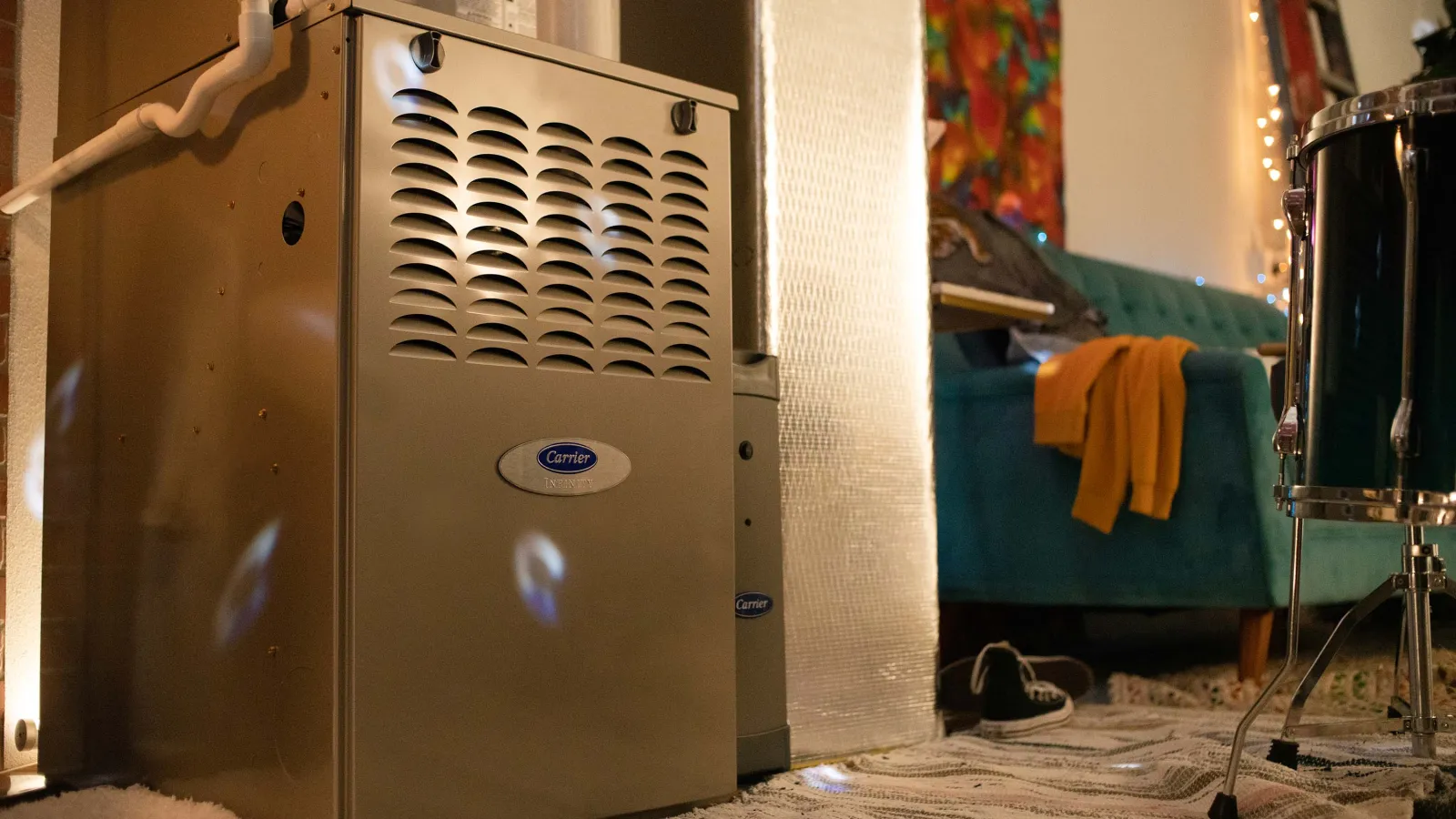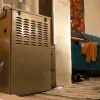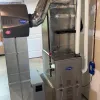Updated: October 16, 2023
If it’s time for a new furnace, you might be wondering whether today’s furnaces are more efficient than the one you’re replacing. The answer is yes! Compared to what was available 10 to 15 years ago, there’s a greater variety of efficiencies and furnace types to choose from.
In the old days, nearly everyone had a standard efficiency furnace. You can still get one. Their annual fuel utilization efficiency (AFUE) measurement is 80% because 80% of the heat they produce is used to heat your home. The rest is discharged as exhaust.
Nowadays, you can also get a high-efficiency furnace. These have an AFUE between 90% and 97%. Generally speaking, these units are more efficient than their 80% brethren, but AFUE doesn’t tell the whole story! Let’s consider the pros and cons of high-efficiency furnaces.
Benefits of a high efficiency furnace
Better efficiency
All else being equal, a 95% furnace will operate more efficiently than an 80% furnace. Compared to the standard unit, an additional 15% of the heat produced during the combustion process is used to heat the home. That’s a good thing.
Better furnace efficiency means lower energy bills and a gentler impact on the environment. But lower cost and a greener footprint aren’t the only benefits of a high-efficiency furnace.

Sealed combustion
Many newer Atlanta homes have encapsulated crawlspaces and/or attics insulated with spray foam. These spaces are sealed off from the outdoors and are part of your home’s envelope. If your furnace lives inside a sealed attic or crawlspace, high-efficiency furnaces use a design that’s well suited for those kinds of spaces: sealed combustion.
To get a sense of what this design entails, first consider an 80% furnace. It uses the surrounding air – that is, the air inside your attic or crawlspace – for combustion. Assuming they’re installed properly, high-efficiency units work differently. They bring in combustion air from the outdoors through a dedicated pipe that’s sealed off from the space that houses the furnace.
Why is this such a good thing? Because in a sealed, unvented attic or crawlspace, you don’t want your furnace using the surrounding air for combustion.
The process standard furnaces use to produce heat is called “open combustion.” It works fine when the furnace is inside a vented environment (like typical, unsealed attics or crawlspaces) and is perfectly safe. However, when it operates in a sealed environment, the volume of ambient air may not be sufficient for proper combustion; this can create a back drafting situation where carbon monoxide (CO) enters your living space.
In other words, it’s a safety hazard.
High-efficiency furnaces with sealed combustion don’t have this problem and are a good choice for furnaces that will operate from a sealed attic or crawlspace. If you’re thinking about encapsulating your crawlspace or insulating your attic with spray foam, consider upgrading to a high-efficiency furnace at the same time.
Downsides of high efficiency furnaces
The biggest drawback for high-efficiency furnaces is one you may have encountered for other energy-efficient devices or products: the upfront cost. Compared to a standard efficiency furnace, it’s higher.
Higher equipment cost
Depending on the specifications, a high efficiency furnace might cost anywhere from 25% to 40% more (including furnace installation) than an 80% AFUE model. If that seems like a lot to swallow at once, remember that a high-efficiency model accrues significant savings over time since it requires less energy to operate.
Installation costs
If you’re getting your first high efficiency furnace, your HVAC contractor will have to install two new components:
- Piping for the combustion air
- Drainage for the condensate
We’ve already mentioned that high-efficiency units use sealed combustion, which requires a dedicated pipe for bringing in air from outside. The other special component is a PVC drain line, which may also require a condensate pump to send water from the furnace to the outdoors.
Unlike standard furnaces, high-efficiency models produce condensate. These furnaces have two heat exchangers (standard furnaces just have one), and the combustion gases become significantly cooler inside the second one – cool enough to form condensation. That’s why drainage is required.
Installing these components usually requires some light construction, which adds to the cost of installation. The good news? It’s a one-time thing. The next time you replace your furnace, the combustion air and drainage infrastructure will already be there.
Where the “high efficiency” designation falls short
A furnace’s AFUE only tells you what percentage of the heat produced by the unit ends up heating the home. That’s useful information, but it doesn’t provide the full picture of efficiency.
Single stage, two-stage, and modulating furnaces
AFUE fails to account for the stages of heat a furnace can provide. The most basic furnaces offer just one. With these units, the heat kicks on at full blast any time the temperature drops below the thermostat setting. One stage = full blast heating.
A two-stage furnace, on the other hand, offers a high (full blast) stage and a lower stage. When the furnace needs to bring the temperature up several degrees, it will use the highest setting. However, it will usually just need to use the lower stage. The heating cycle will be longer, but the energy consumption is lower.
With a modulating furnace, the difference is even more pronounced. The furnace varies the amount of heat produced according to conditions inside the home. Since every modulating furnace is equipped with a variable speed blower, they can also vary the fan speed to match the home’s heating needs. That way, the furnace uses the least possible amount of energy while still fulfilling your comfort requirements.
Why does this matter? Because designations like “standard” and “high” efficiency don’t tell you whether a furnace is a single-stage, two-stage, or modulating unit.
Furthermore, these designations don’t tell you whether a furnace has a variable speed blower. Increasing or decreasing fan speed according to conditions can have a profound positive effect on efficiency and comfort, so you’ll want to know about this feature if efficiency is important to you.
Say you’ve got an 80% furnace in a vented attic, and you replace it with a 95% furnace. On paper, your furnace has more efficient specs. However, if it’s a single-stage 95% furnace, you probably would have saved on upfront costs and reduced your energy consumption even more if you had purchased a two-stage 80% furnace instead. And if that two-stage unit had a variable speed blower, you would have enjoyed the added benefit of fluctuating airflow!
The 95% unit may have been labeled “high efficiency,” but a standard two-stage unit would have provided better real-world efficiency.
When choosing a furnace, look beyond designations like “high efficiency.”
Such labels are helpful, but they rarely tell the whole story. What you need is a furnace that’s suited to the space you’ll be housing it (attic, crawlspace, or otherwise), keeps you comfortable, and provides the best efficiency for your budget regardless of its AFUE percentage.
Sometimes, that furnace will be a high-efficiency model. But not always.
With the pros and cons of high-efficiency furnaces in mind, go forth with insight as you consider a new furnace for your Atlanta home! Oh, and you can always give us a shout when you’re ready to switch out that old one.






